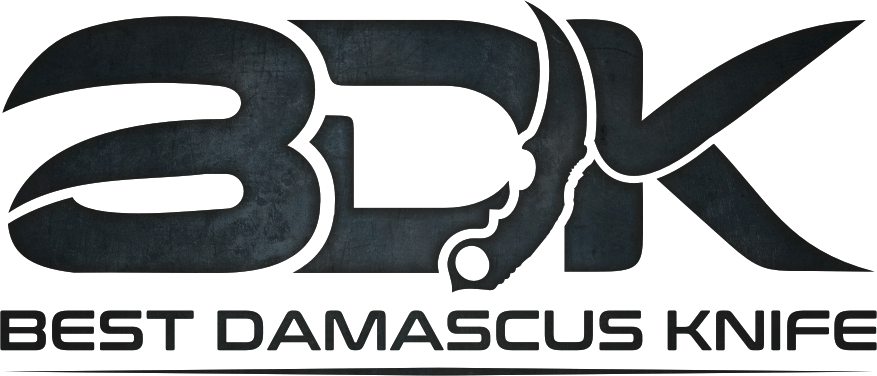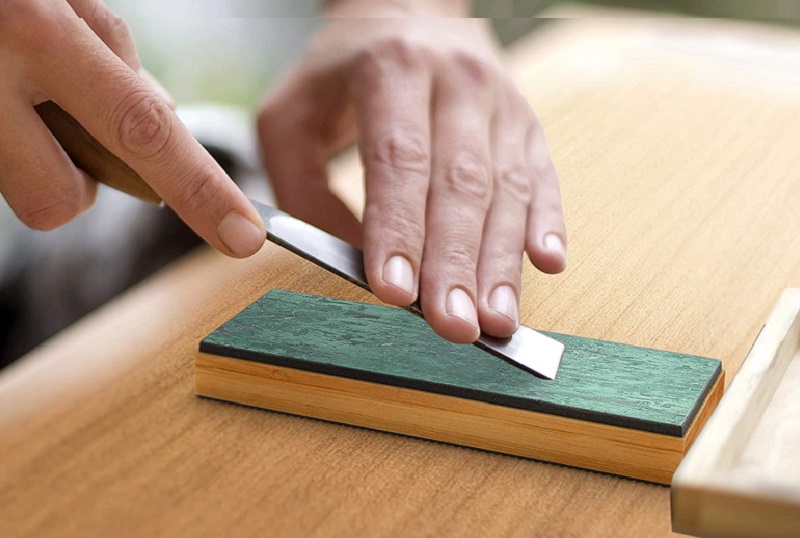Are You guys wondering about What is stropping!? and How to strop a knife? These were my thoughts precisely when I was a newbie attempting to piece collectively this interesting topic called knife sharpening. If I am honest I am still a newbie. Best to admit it and proceed to enhance my abilities slowly. Anyhow, back to the topic at hand: what is stropping, and why worry about doing it? Stropping is an important method in knife sharpening that does the following: realigns a knife’s cutting edge, eliminates any excess metal, and last but not least polishes and smoothens the blade. Since the purpose of this instructable is to reveal to you how, I will abstain from going into the nitty-gritty, super technological aspects of what occurs when you strop. For now, the usual knowledge will suffice. Before I get started here at BestDamascusKnife, I want to discuss when and how frequently I strop. I normally strop after sharpening my knife, and therefore I strop every time I sharpen (this alters with each knife).
Summary of Stropping
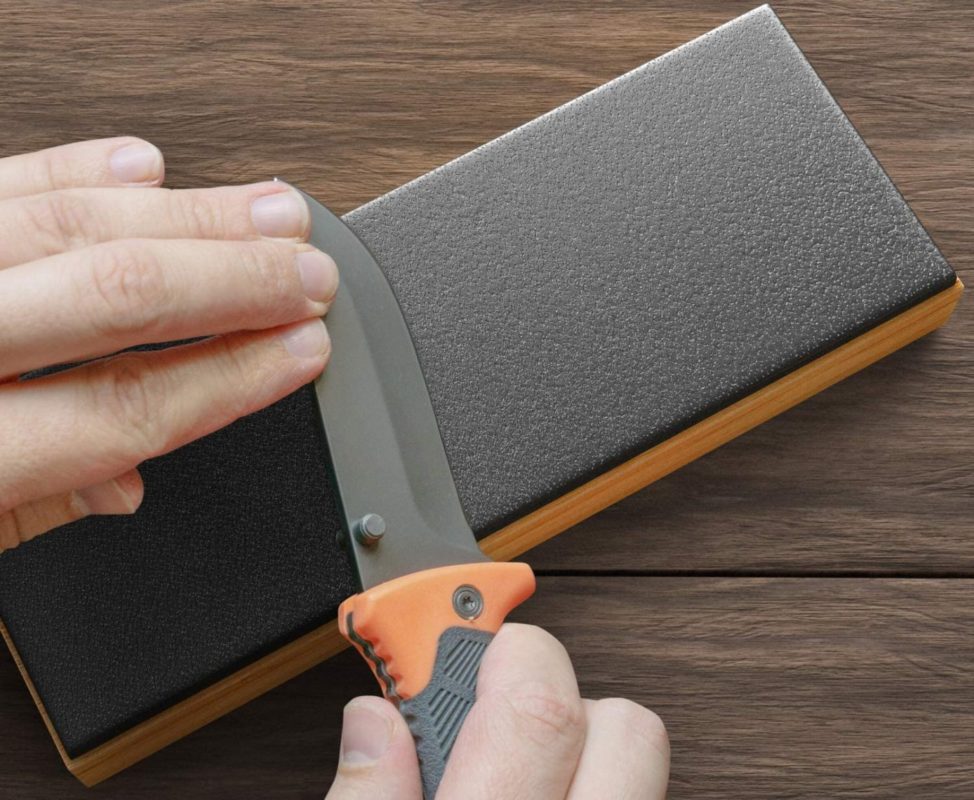
Summary of Stropping
A well-known similarity of the strop, also known as the strap, is a popular barber’s strop using which a barber strops a straight razor. The barbers manage to use long leather straps to make their razors sharp. In the universe of knives, a strop is conventionally a leather strip applied to polish, maintain, or sharpen an edge by using the method of abrasion.
It leads to a surface while the ultimate sharpening stage once the finest stone is used for sharpening. The strop uses to polish the edge, but it additionally realigns the cutting edge and smoothens the blade separated from removing excess metal shavings left by your sharpening stone.
While other elements such as linens are also used, strops are usually created by using leather. Both smooth (grain side) and suede (flesh side) leathers are used. Leather straps are normally made using cow leather, which is not satisfactory by animal lovers. For them, there are other strops, such as those created using textile materials.
The word “strop” refers to anything that is helpful in the last sharpening stages and is not a stone. It encompasses created materials such as kangaroo or horse leather, newspapers, balsa wood, fire hoses, and textiles such as linen, denim, and cotton. The newest ones come with microfibers and nano cloth in them.
In brief, you can complete a knife stropping with a piece of leather, cardboard, denim, newspaper, or even wood. Though, each of these stropping media has a different impression on the edge, typically in terms of aggressiveness.
Therefore, what exactly stropping does? On their own, real strops serve to reposition an edge without causing any actual abrasive action. They just push the rolled or curved edge towards its primary position without abrasion.
If you prefer a treated, additionally known as a loaded strop, their surface appears with abrasives. moreover, they can be embedded with oils and waxes. The added abrasives are proficient in discarding metal at varying degrees as per the cutting type. They refine, sharpen, hone, and polish an edge rather than simply just realigning.
Different Types Of Strops
1: Hanging Strop
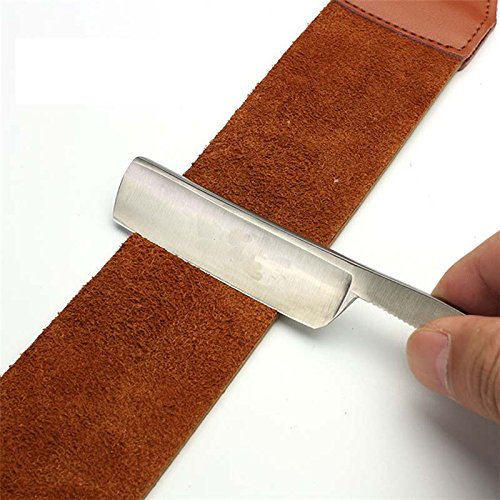
Hanging Strop
Before you know how to strop a knife, you lack to know the different types of strops. There are two main kinds for you to know, specifically, hanging and bench strops. The latter includes even the paddle strops.
The hanging strops are those that the straight razor shavers and barbers use; whereas, the bench strops are generally utilized for razors, woodworking tools, and knives. The previous is affixed to a towel, hook, or a knob. It is proficient of being stretched tight and according to the edge.
2: Bench Strop
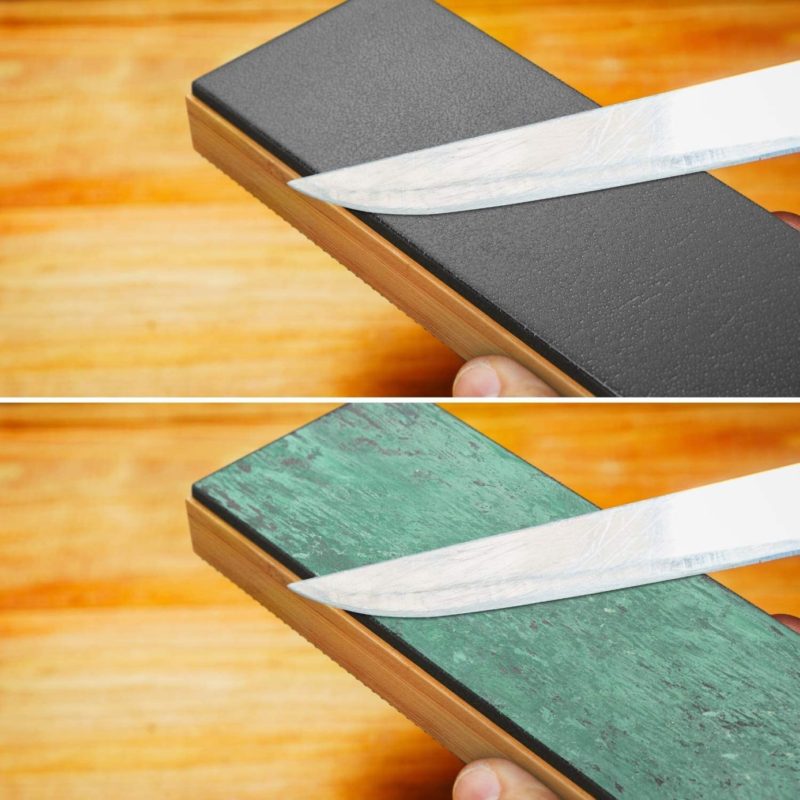
Bench Strop
On the opposite hand, the bench strops are normally placed on a hard surface and are precisely flat. The surface can be acrylic, metal, or wood. They are adjustable.
Yes, you additionally have installed and razor strops. The previous ones arrive with leather attached to solid wood, such as maple. As per your work style and the edge to be sharpened, you will discover alternatives such as handheld and bench mounted strops.
3: Paddle Strop
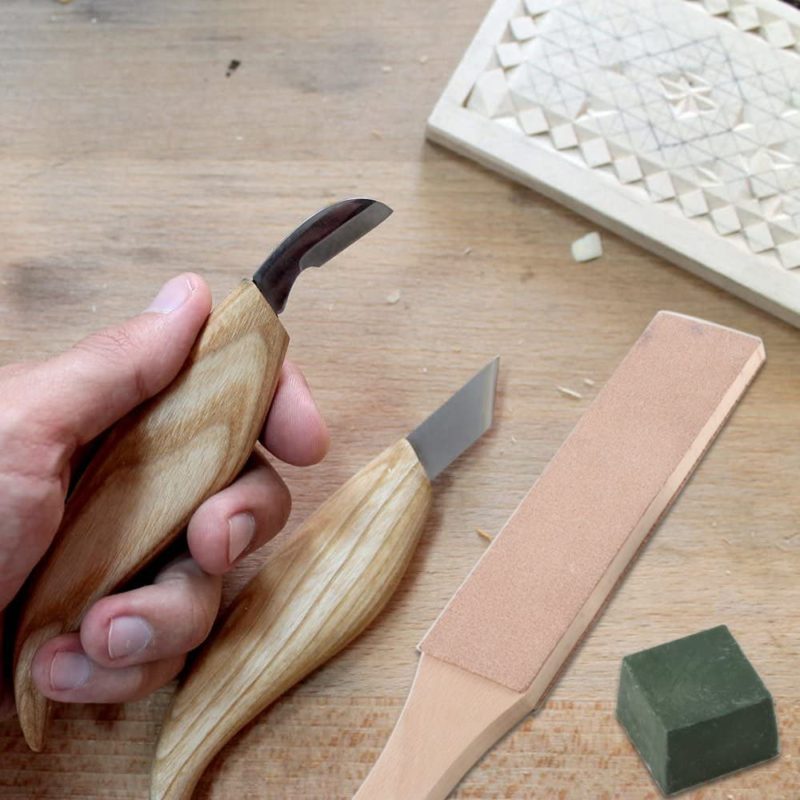
Paddle Strop
All of them can be found in suede or smooth leather sides. Some popular and varied paddle strops come with soft leather on one side and suede leather on the other.
On the other hand, razor or threatening strops are broad belts with heavy linen on one side and leather on the other. Some users first strop using its heavy linen side to clean the blade before turning to the leather side for stropping. Well, to do this or not before stropping is a personal choice.
These strops are hung from a wall or chair for use as well as storage. A hook is at one of its ends and a liberally sized handle on the other.
How To Strop A Knife Step By Step Guide
1st Step: Preparation And Arranging Your Tools
Here is where the process may change for you except you use the identical tools as I do. I like the stropping system that appears with the Work Sharp GSS, that is why that is what I am applying for this presentation. Important: You do not necessitate to use what I use! If you previously have a leather strop, excellent, If not then you can click the link and check out 3 of my preferred leather strop recommendations here Before I begin stropping I give my knife a swift rinse under the tap.
2nd Step: Washing Your Leather Strop
This step is particularly important if you have a used, loaded strop. If your strop is new and you are doing this the first time, you can move to the next step. So here is the thing: Every time you strop, you leave metal trash simultaneously with any earlier used stropping mixture. Since you require a clean piece of leather, you will lack to get this gunk out. I have found that rubbing alcohol works well for me! Use a couple of dabs on a cloth or paper towel and rub away at your leather strop till you get all or most utmost of the gunk out.
3rd Step: Use Stropping Compound
Are you wondering what is a stropping compound? The Stropping mixture serves to clean and polish your edge. It is accessible in various grits and is normally in the form of a bar. I typically strop with an extra-fine mixture, as I have discovered It works excellently. Before using the compound, I add some petroleum jelly and coat the leather evenly. Then, I use the compound by coloring it in as if it were a crayon. While you should intend to get an even coat, be cautious to not add too much!
4rth Step: Knowing Your Angles
Alright, about time to stop! But before we do, let us talk angles. Typically, you will need to stop at the identical angle you sharpen for example if you sharpen at 15 degrees, plus strop at 15. A clever way to get your angles accurate is to hold your knife perpendicular to the surface for example at a 90-degree angle. Half of this is 45, and the added half is 22.5. This will give you a great idea of where you want to be.
Last Step: Let Us Get Stropping!
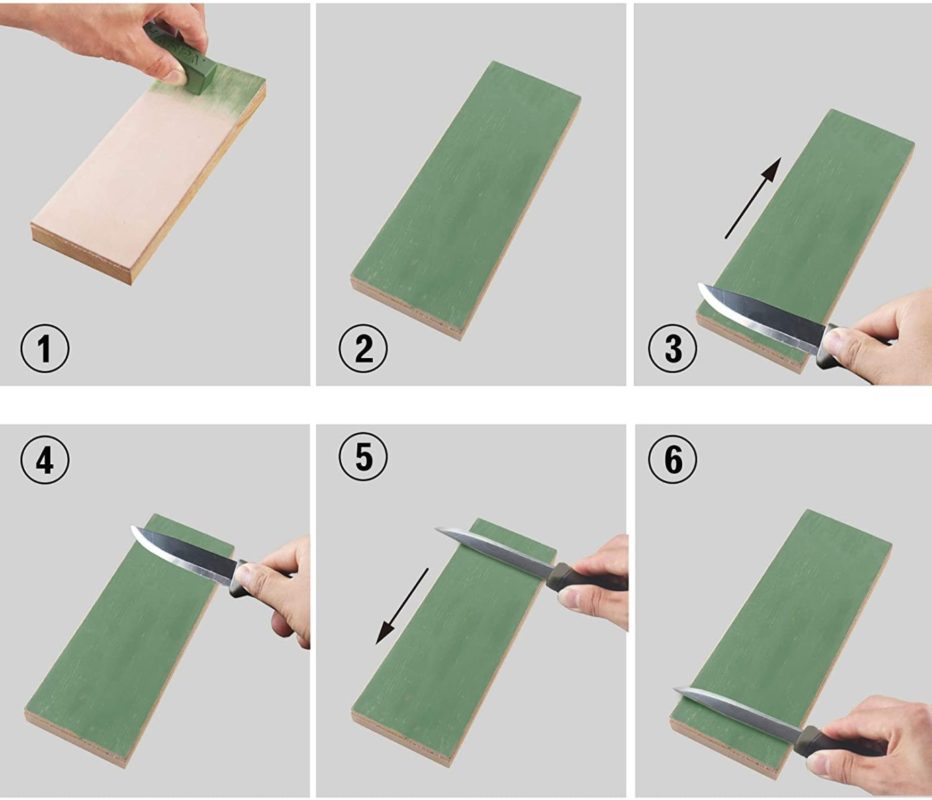
Last Step Let Us Get Stropping
We are now ready to strop. Do not forget Stropping is the opposite action of sharpening. You never need to cut into a strop, therefore you always pull backward. Here is how to go about it:
- Put your knife on the leather strap at the wanted angle. Do not forget you will be running from heel to tip.
- Gently draw your knife in a backward movement from heel to tip. Remember to keep the angle during the entire process.
- Now flip your blade to strop the other side. Redo steps 1 and 2.
- Redo for a result of 7 alternating passes. Do one draw on one side, followed by one draw on the other side, until you have performed 7 passes on each side.
Once you are done, make assured to wash your blade with warm water. Plus, do not forget to clean your strop! It will be simpler to do it right away than waiting to do it after (writing step 2 for more guidance on how to do this). I hope this gives you a better understanding of how to strop a knife. If you have any questions, please let me know!
Conclusion
My way of sharpening is more accurately based. I manage to test and review the important theories surrounding sharpening using microscope pictures as the basis of an argument, keeping the language understandable and convenient to both novice and skillful sharpeners alike. The easy answer to every sharpening question is “it depends” since each kind of sharpener will have diverse requirements. And even though the precepts for sharpening everything are moderately much universal, an axe has distinct refinement and geometric requirements than a razor blade. The purpose of bringing ideas from different regions of sharpening together in one place is what I hope will whet your appetite as well as your sharpening stones. We will update this page as more stropping lessons come out.
